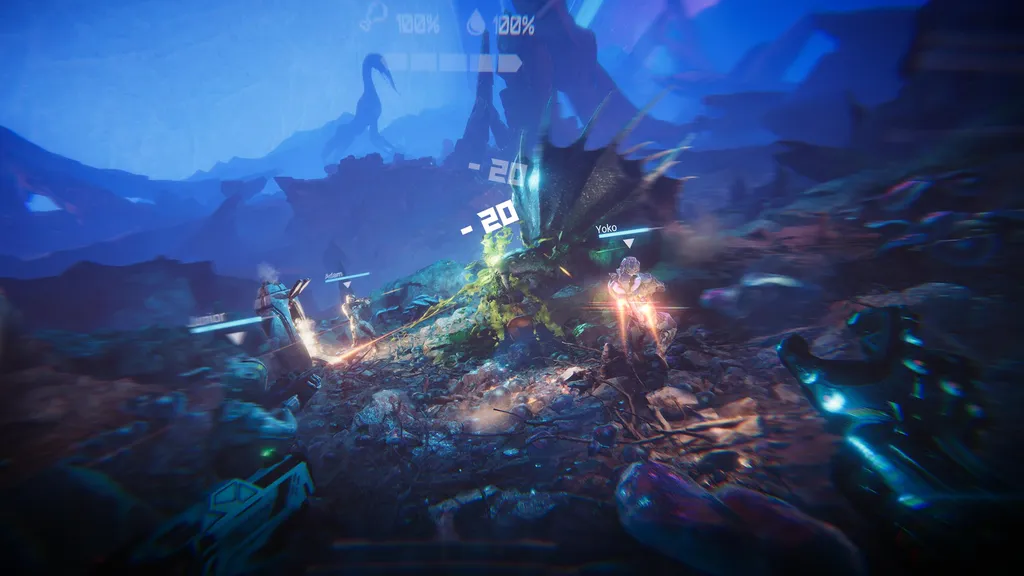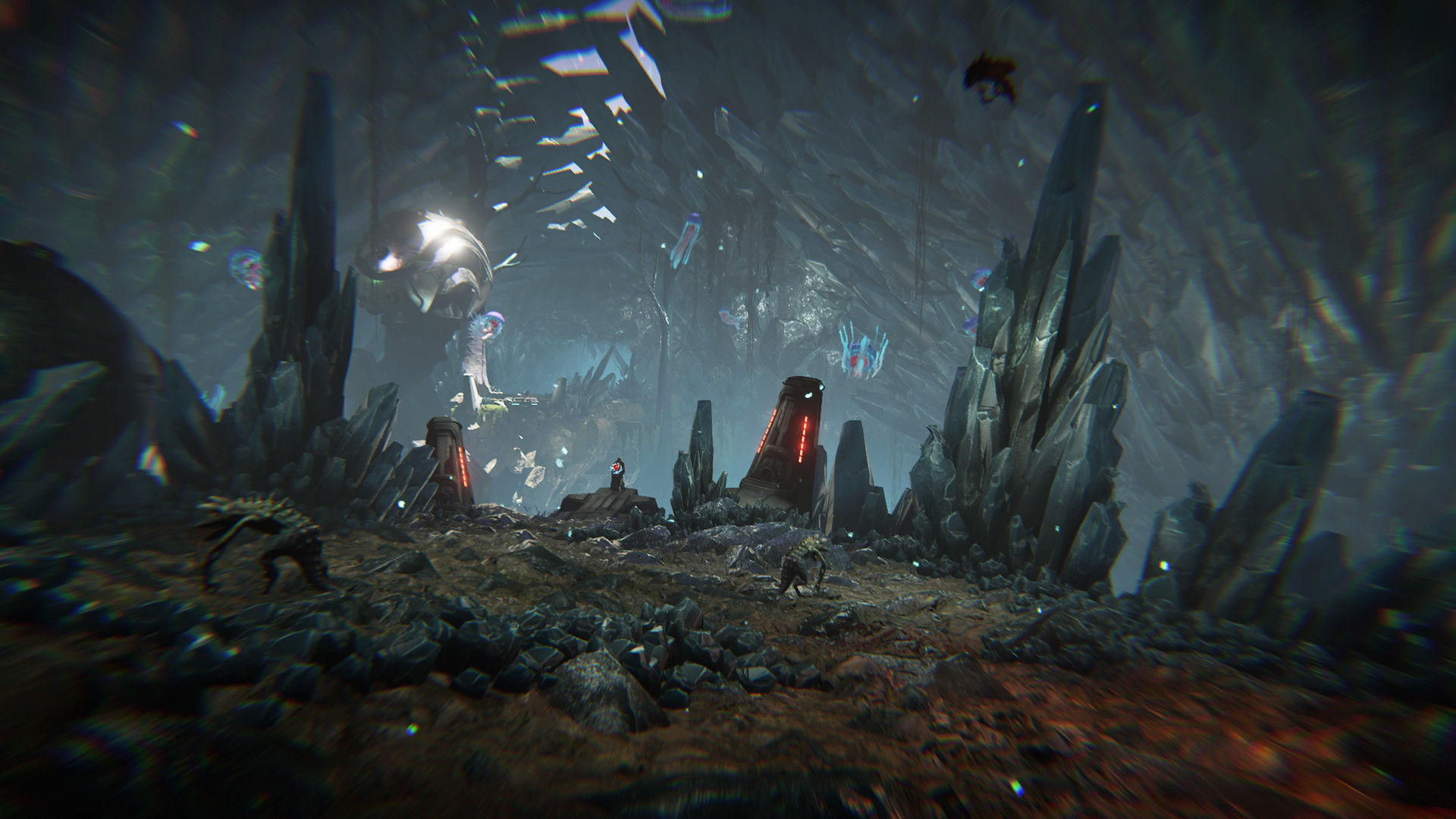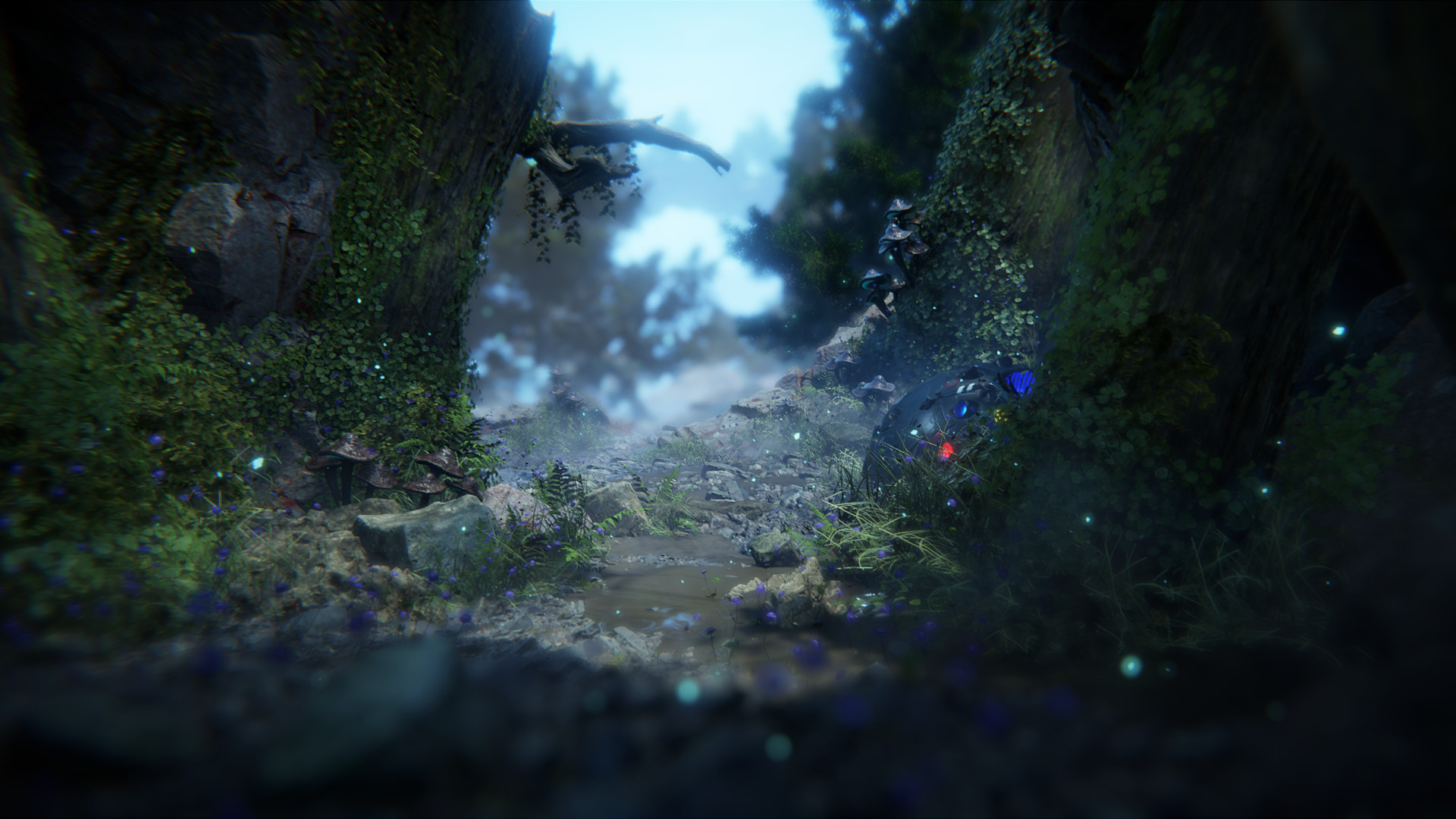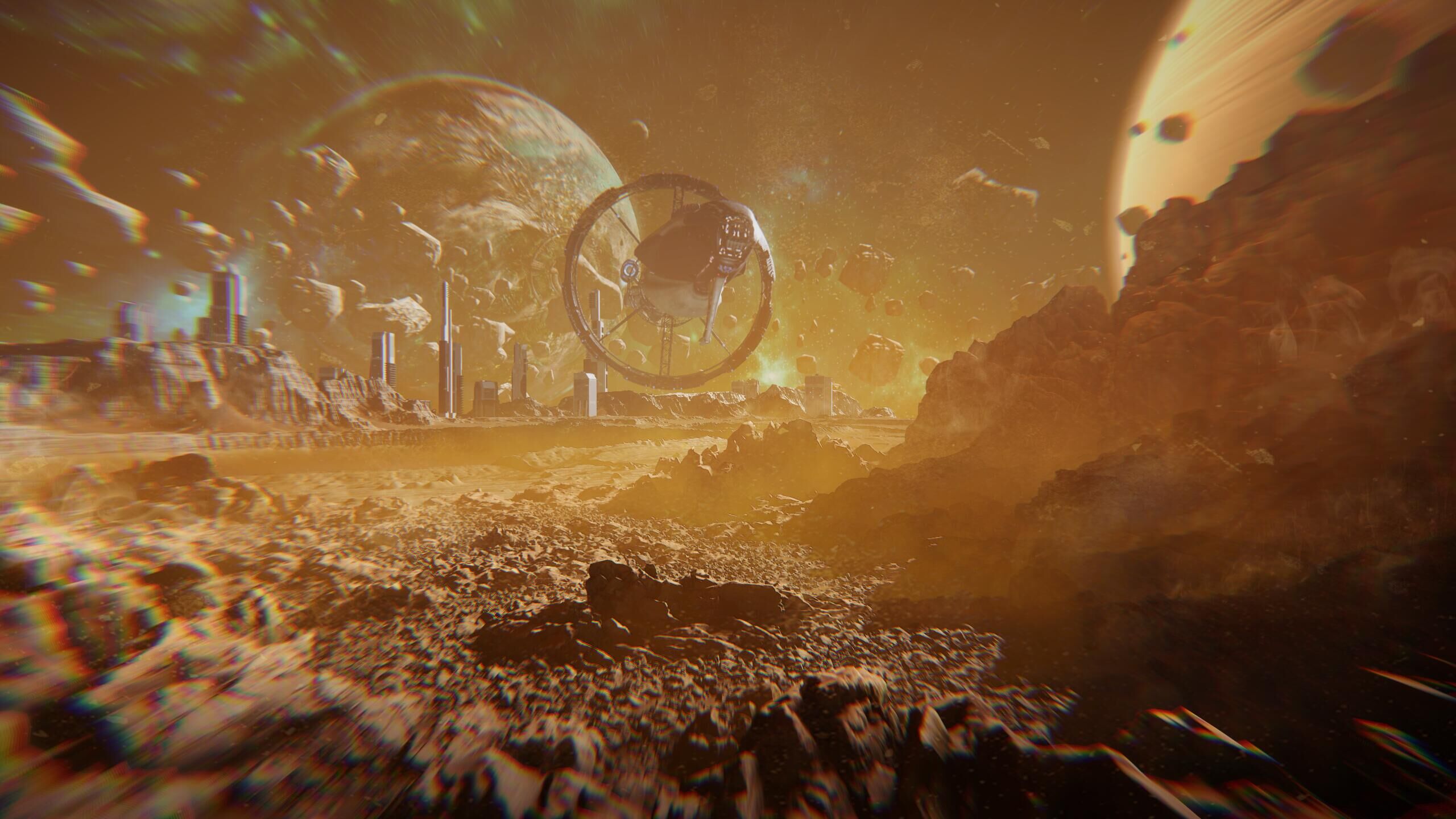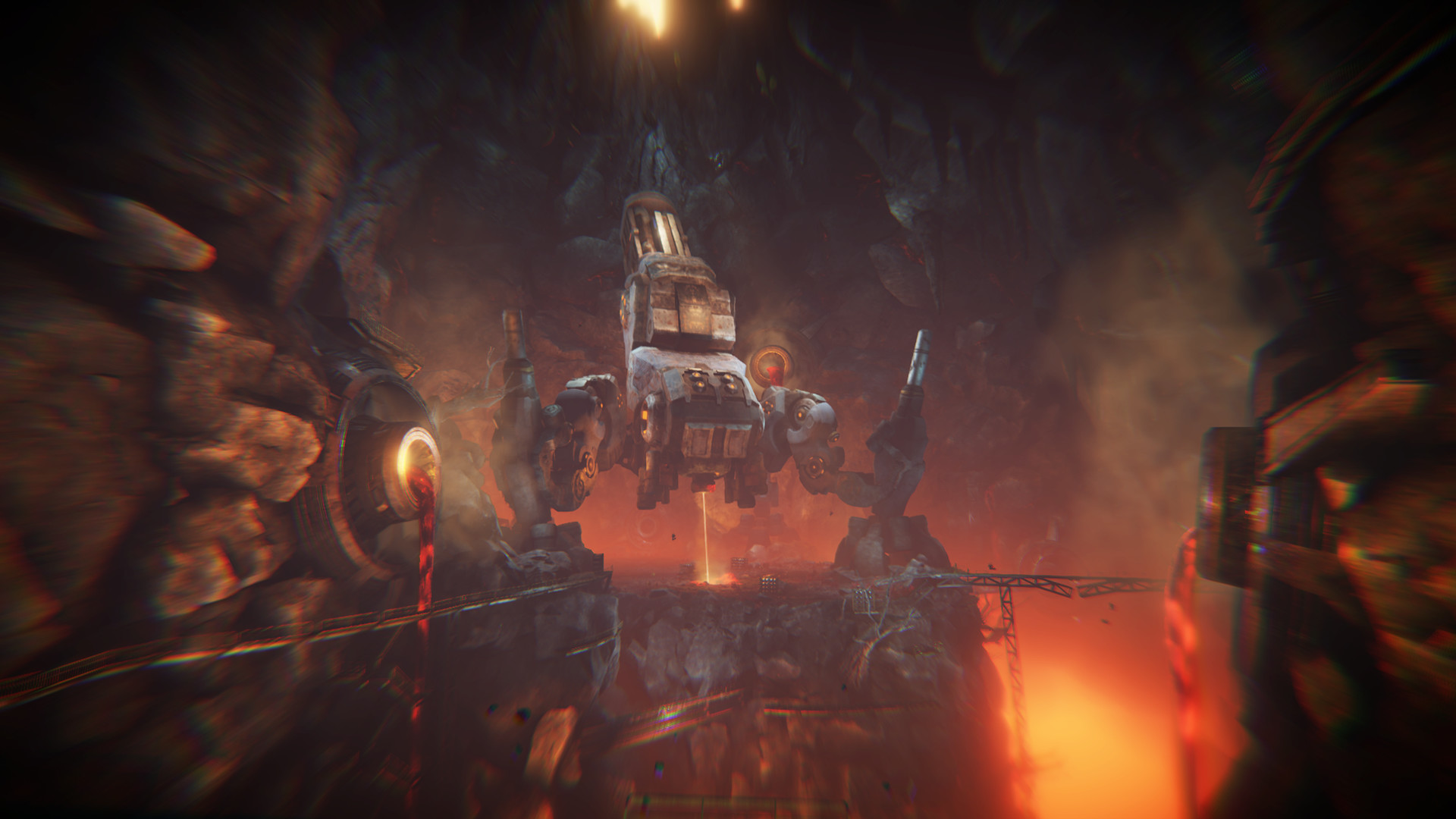Seeking Dawn is, without a doubt, one of the most visually impressive VR games I’ve ever played. Each and every environment is bursting with not only color, but also imaginative alien life that moves with grace and subtly. Early on in Seeking Dawn I walked through a cavern that emerged into a wide open space with a gorgeous vista in the distance that depicted a far-off planet encircled by a gaseous ring and as I craned my neck upwards to marvel at it, a jellyfish-like creature undulated across my vision. It was pure magic.
Consider me disappointed then when, after spending several hours with the game, poor design decisions and lackluster balancing issues made it difficult to enjoy the vast, jaw-dropping visuals I saw around every corner.
In Seeking Dawn you take on the role of James Weston, a good-guy operative that’s sent to investigate the disappearance of some allied forces on a remote alien planet occupied by a bunch of bad-guy operatives. After a crash-landing you’ve got to scavenge for supplies and slowly pick your way through a bizarre and hostile environment. The story’s just about enough to keep you going, but that’s really it.
Voice acting is sub-par at best and if you watch too closely you’ll quickly notice that character’s voices don’t match their lip syncing. Vocal performances feel forced for most of the characters and they do very little to add anything substantive to the experience.
But you shouldn’t play Seeking Dawn for the story — this one is all about the shooting and gawking at the visuals. Gunplay is serviceable, but far from revolutionary. Over the course of the 10-15 hour adventure you’ll use trusty pistols, submachine guns, shotguns, and even explosive weapons that can attach to enemies before blowing up. It’s just a bit frustrating that ammunition isn’t more readily available throughout the game world.
Luckily the co-op features work just fine and do a great job of making everything a bit more fun. Taking out larger creatures with a friend is a blast and adds an almost Monster Hunter-level of resource farming, but the idea isn’t quite as developed.
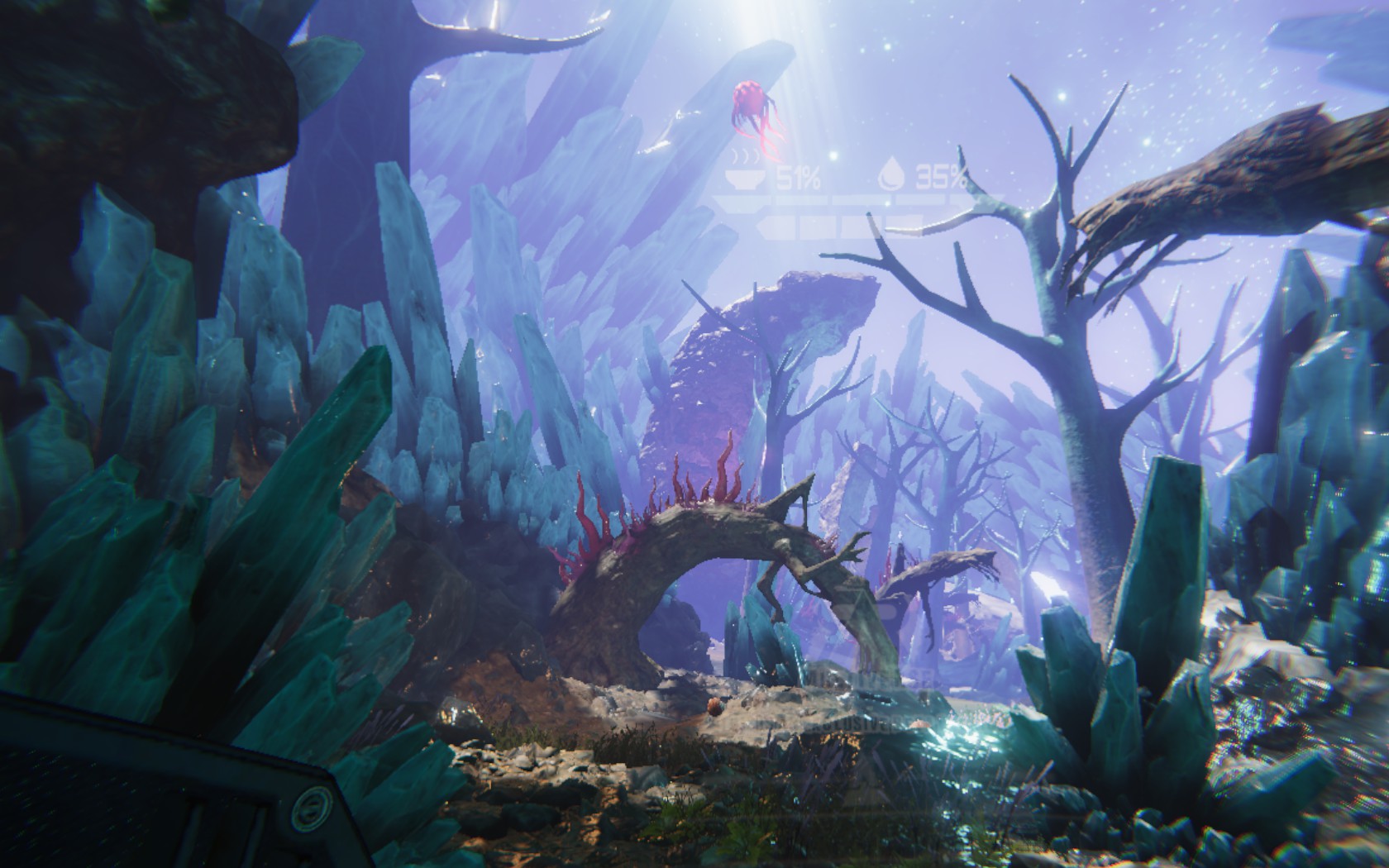
The closest point of comparison I can think of for Seeking Dawn is Farpoint. Both games are campaign-focused first-person shooters exclusively available in VR and revolve around crash-landing on an alien planet while searching for missing allies. When you put it that way the two games sound like they’re cut from the same cloth, but the similarities really end there.
In the case of Farpoint it’s a very linear shooter about going from point A to point B and killing everything in your path. Seeking Dawn on the other hand has a heavy exploration undertone that helps shape and mold most of its mechanics.
For example, in the first hour of the game you’ll find two gadgets that let you grind up plant life to collect wood, berries, and other resources, as well as one that lets you carve up exotic ores for valuable minerals. This is far and away the most tedious and poorly conceived part of the game. Not only are most resources limited and scarce, but you’ll often find yourself blindly wandering zones in search of specific rocks that are just barely a different color than another rock to get a particular mineral you need to make X thing or craft X gun.
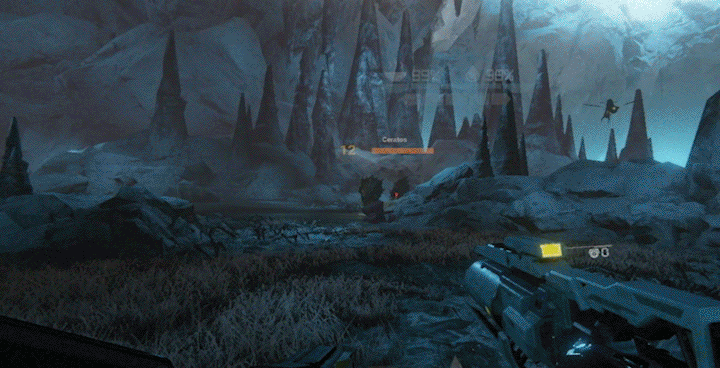
These crafting-focused roadblocks show up far more often than I’d have liked. I’ve got no idea why there isn’t a map system indicating where certain resources spawn or at least a reliable way of tracking where to find specific resources. By the midway point so much of the game is dependent on your ability to craft weapons, armor, and ammo that if you can’t find that specific ore you need then you’re just screwed.
In fact, at one point during one of my play sessions, another player joined my game explaining that he was at the final boss but couldn’t beat it because the gun he needed to use was out of ammo and he couldn’t find the resources needed to craft more. That’s a serious balancing issue. The lack of readily available ammo causes hiccups and difficulty spikes through the whole game and was the source of a lot of my frustration.
Not to mention the obnoxious “survival” mechanics which are really just two percentage on a timer that tick down slowly in real-time to denote when you’re hungry or thirsty. When a game like The Forest or Solus Project is constructed specifically around the idea of survival, I’m fine with worrying about my hunger and thirst. It serves the overall experience. But when a developer shoves those mechanics into its otherwise straight forward shooter to increase difficulty and bloat features, it’s just annoying. Instead of exploring the environment or thinking about how to approach the next fight, I have to go find a corner to hide in so I can shove alien cheeseburgers in my mouth and take a few swigs of a water bottle so my character will stop audibly complaining in my ear about being hungry and thirsty (literally) just about every 20 seconds.
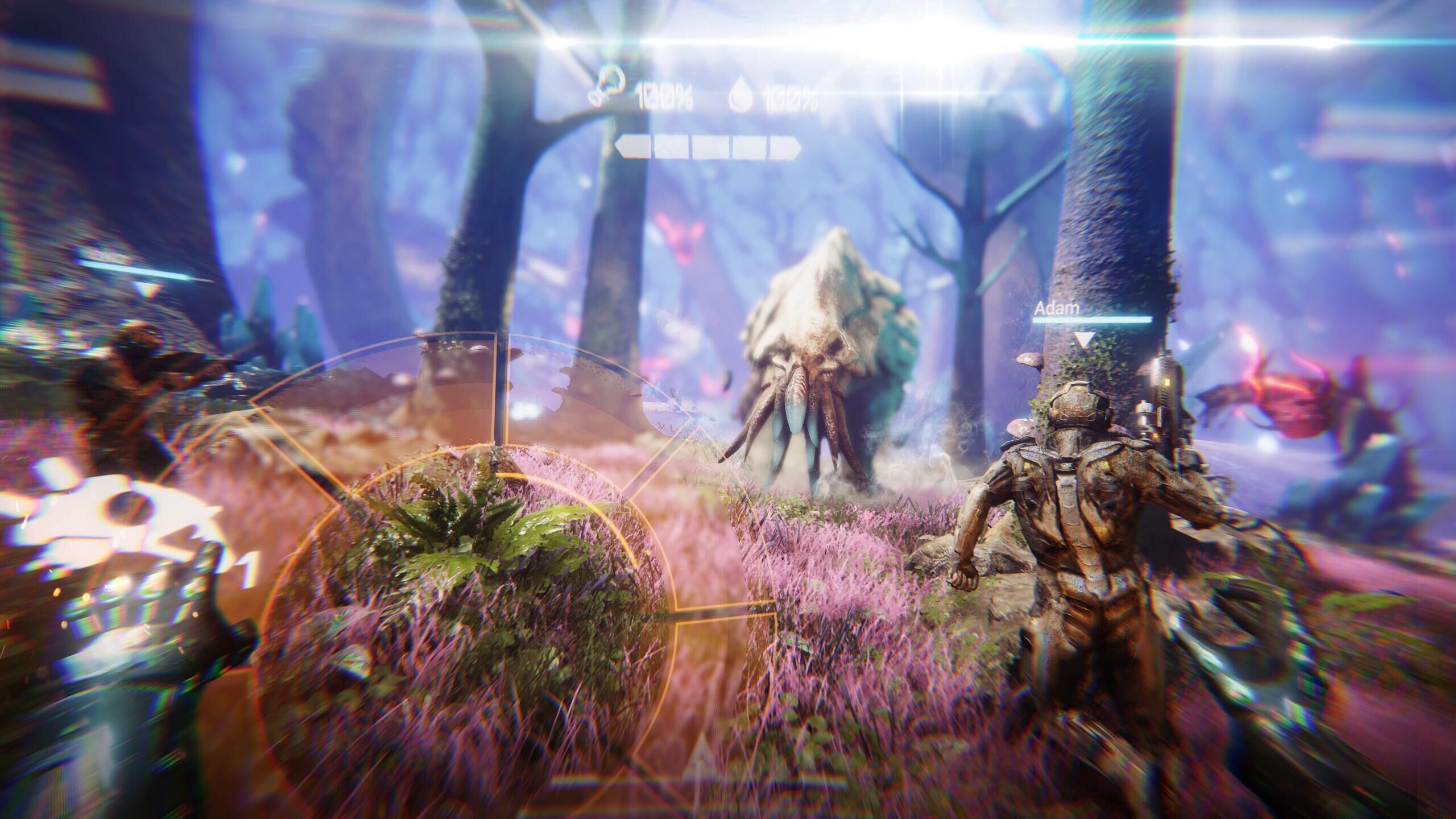
It’s not often that a game feels like it’d be better by cutting away features, but Seeking Dawn is one of those cases. If resource gathering was less mandatory and the survival system was gone entirely, Seeking Dawn would be an overall better game. As it stands, those features just get in the way of the fun.
Were it not for all of the cumbersome features, there really is quite a lot to like about Seeking Dawn. The drop-in, drop-out co-op, as mentioned, works great with up to four total people (although you share loot so it’s likely someone is gonna get shafted on resources eventually) and gunning down alien bugs is a blast with friends.
Generally the combat is engaging even if most enemies employ the most basic “run at player until one of us is dead” strategy. Eventually you’ll take on bigger boss monsters with more elaborate attack patterns that are fun to tackle in groups and extremely hard to fight solo.
Once you get deeper into the game enemies get faster and your reflexes need to be top-notch in order to land critical hits to take down the beasts. There’s lots of DOOM-esque kiting against some of the harder foes and that’s really when the game is at its best.
Even though the story itself is shallow the world is rich and beautiful. Each zone is dense with flora and fauna and I really did feel like I was exploring a living, breathing world somewhere among the stars. Sifting through data log entries revealed some interesting lore as well, but not a lot of that was communicated in-game effectively.
Seeking Dawn feels like it was probably the exact game that its creators wanted to make. In terms of features to tout in marketing materials it checks most of the boxes you’d want: 10+ hours of content, even if a lot of it is repetitive, action-packed gun-based combat, online co-op, crafting, survival mechanics, aliens, and other buzzwords.
It gets the job done, but when you peel back the layers and look beneath the surface you’ll find not all that glitters is VR gold.
To get the full picture for what Seeking Dawn has to offer, you can almost separate its elements into two buckets: on the one hand are the more immediate, visceral qualities I liked, such as the eye-popping visuals, intricate world, and fierce combat. Then on the other hand you’ve got monotonous and tedious elements that do little more than hinder the enjoyment of the former elements. By that I mean stuff like cumbersome resource management, half-baked base building, intrusive hunger and thirst survival mechanics, and a frustrating crafting system. If only Seeking Dawn had more of the former and less of the latter, this review would have been written very differently. As it stands, it’s a flawed — but absolutely gorgeous — VR FPS that struggles to find its footing.
Seeking Dawn will be available for Rift, Vive, and Windows VR via Steam starting on July 12, 2018 for $39.99. Check out these official review guidelines to find out more about our process.

